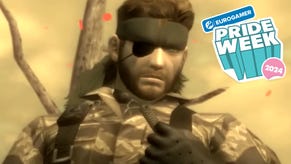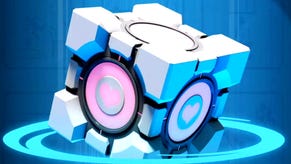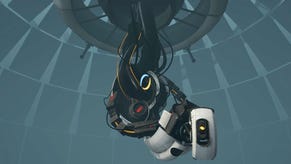How Valve Opened Up Portal 2
Chet Faliszek and Erik Wolpaw help us think with portals.
When Gabe Newell asked Chet Faliszek and Erik Wolpaw of Old Man Murray fame to come work at Valve, they of course answered the call - the developer was about to ship Half-Life 2.
Now, six-and-a-half years later, the writing duo have an impressive credits list under their belt: Half-Life 2: Episode 1, 2, The Orange Box, Left 4 Dead, Left 4 Dead 2 and, come April, Portal 2.
Here the childhood friends talk in-depth about the creation of their latest offering. How did Portal 2 come to be? What's changed? How does it all tie into Half-Life? And what's next? Read on to find out.
We weren't banking on Portal 2 being the game that saves the company. We sat down and we were like, 'What can we do that will make this interesting?'
Part of it is so many people love not this GLaDOS or not this Chell, but the Aperture Science world.
We felt Aperture Science was a rich environment to go back to. Because Portal was so short, people still wanted to do more with the Portal gun.
Initially we were thinking about what puzzle elements could we add to the game that would expand the puzzle space and give us some new things to do with the portals. We knew we didn't want to change the central mechanic.

We liked the elegance of, you have a portal gun that shoots two portals. We didn't want to add a new gun that, you have to switch weapons now, or add a bullet time button or something.
There was a period of exploration where it was like, well what other puzzle elements, what things can work with the portals but not replace the central mechanic? We came up with a list of stuff that seemed to be really fun and then combinatorially interesting once they were all working together.
At no point when we were working on Portal were we like, we're going to make a four hour game, so how do we get to four hours? It was, we're going to show you all the neat things you can do with this Portal gun, and we're going to try not repeat ourselves too much, and let's see how long that ends up being.
Once we had all these new puzzle elements that combined in these interesting ways, using the exact same design philosophy of, let's show you the neat things this can do, it ended up being about two-and-a-half times as long as Portal 1, just naturally, with no padding.
We thought about what we could do story wise, and we came up with a whole bunch of ideas and tried some stuff out.
Plenty of stuff.
But a lot of stuff gets melded into things we do ship, too.
Yeah. Sometimes we'll take an idea and end up shipping it somewhere else.
We start play testing really early on, so we can see what fails or doesn't fail. Sometimes things just need a little nudging, or it's things that annoy us.

Remember the pulse beams from Portal 1? Changing those into lasers was such a win, because they're a lot easier to use, you can see them, they're always on, and you don't have a frustrating wait for the ball to travel across the screen.
Lasers do the exact same thing, except they're much clearer. You get instantaneous feedback and for people that are still wrapping their heads around portals, you see the laser is going in here and it's coming out here. It's much clearer to people.
We write a crap load of dialogue and some of it just doesn't end up in.
We probably did write 13,000 lines of dialogue.
They move puzzles around. They change a puzzle. They collapse a puzzle. Or it's just not working, or the pacing needs to get changed.
Pacing was big in our minds. At four hours you could support that story structure where GLaDOS talks and talks and talks. She has her little psychotic break about two-thirds of the way through, and then you get that part of the game.
We thought that exact structure was going to be boring for us to write and potentially not exciting for people to play. There's no surprise there any more.
You've done it. Also, GLaDOS ends at a different point in Portal 1 personally than where she is at the beginning, so we didn't want to travel that same arc. From a writing perspective that was one of the biggest first challenges: what's our arc going to be in this game?
We still wanted it to be this intimate story about your relationship with GLaDOS. So she starts the game where she left off in terms of her state of mind in Portal 1. It's kind of vague, but things happen. Before the game's over, a lot of things happen.








